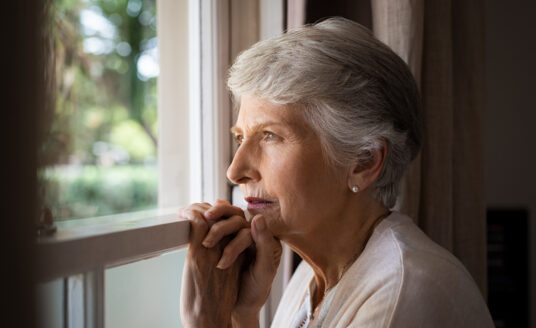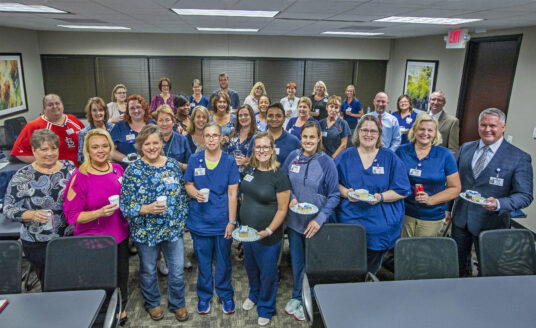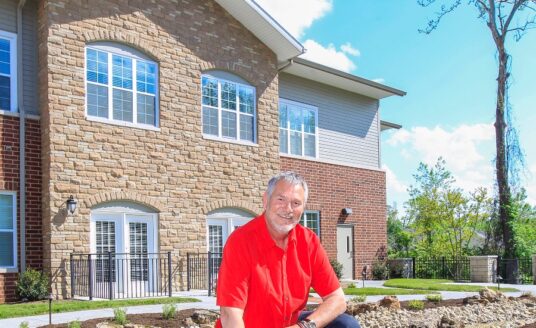On Jan. 29, 2014, David C. Skipworth died in Garland, Texas at age 67 after a long illness, holding his wife Sandra’s hand and listening to the National Anthem.
In his own home. In his own bed.
Like many Americans, dying at home was important for this Vietnam veteran. A 2018 Stanford University School of Medicine study found that 80 percent of us prefer that scenario. Instead, about three-quarters of older Americans die in nursing homes or hospitals.
Skipworth was one of the lucky ones. His wife, Sandra, retired after 25 years as a registered nurse to provide him around-the-clock care.
For most Americans, “caring for their loved ones at home is not realistic,” said Rachelle Bernacki, director of quality initiatives at Harvard Medical School Center for Palliative Care. “I do think it’s the best possible outcome — with less chance of delirium, more chance for independence. But we’re behind the eight ball for people to make this happen.”
What’s Preventing Dying at Home
Myriad issues make the scenario of dying at home a major challenge:
- a severe shortage of professional home caregivers
- the expense of hiring high-quality help
- the difficulties of pulling together a community of family and friends for 24-hour care
“People these days are more ill when they’re dying,” said Dr. Cory Ingram, director of palliative medicine in population health at Mayo Clinic in Rochester, Minn. “The time from being diagnosed to dying is longer. Before, there might have been one [physical] problem; now there are multiple issues that require more nursing care. People have more sophisticated care needs than they did, say, 20 years ago.”
Depending on what’s available near you, some hospice offerings (for people near the end of life) include in-home care, but Medicare has limited coverage for hospice. Coverage is only for those who have a hospice doctor and a regular doctor certify that they are expected to live six months or fewer, and the patient must accept palliative care for comfort instead of care to cure any illness.
Families can be faced with alternatives that are expensive or require endless hours of “amateur” care. “The options are a nursing home for $5,000 to $10,000 a month, hospice care for around $9,000 a month or in-home care, which is, you guessed it, $9,000 a month,” Ingram said.
Getting the Right Team
Another quandary: putting together a “team” to look after the patient. That could include family (often geographically scattered), friends, neighbors, or fellow members of a church, synagogue or mosque.
Sister Patricia Ridgley made that work 20 years ago with her father, Floyd, who was diagnosed with late-stage pancreatic cancer. First, she moved him 80 miles into her Dallas house — a true home away from home — then enlisted a fellow nun, Linda Hajek, to move in and help.
“It was a loving resolution of life,” Ridgley said. “At home you have the smells of someone cooking, grandchildren coming in. It’s much more comfortable. My father loved his life and just went with the flow as he got weaker and weaker.”
That experience played out so well that more recently, Hajek’s sister, Sharon, and mother, Annie Krucick, spent their final years in the same home.
In some cases, it’s not just humans providing TLC during end-of-life period at home. “The cat was such comfort,” Sandra Skipworth said. “David still would go into the garage every day and smoke, and the cat would come in and jump on his lap. Hospice and dying at home allowed us so much comfort that dying in a hospital would not have.”
Some Solutions Loom
In the course of human events, dying in hospitals or nursing homes is a relatively recent phenomenon.
“The further back in history you go, the more you see that almost everybody died at home,” Sandi Hebley, an educator at Faith Presbyterian Hospice in Dallas, said, adding that in the 20th and 21st centuries “all these new [medical] developments created an expectation that doctors could fix anything. So more people went into hospitals because they wanted something fixed.”
As medical advances continued, life expectancy increased. With extended years came more extensive ailments, making dying at home less possible.
“We need more services at home and potentially more in-patient units,” Bernacki said. With the structure we have now, “I’m not sure [dying at home] is that realistic for the boom that’s coming.”
She added that, especially after her recent trips to Japan and New Zealand, “I get the sense that in other countries, the resources that are available at home are larger, more extensive.”
That’s certainly the case in Great Britain, where the hospice movement started in the 1960s. From the outset, hospice advocate Cicely Saunders had in place teams that went to homes with a case manager and several nurses. That setup would make a huge difference here, Ingram said.
“If I could just wave a wand,” he said, “one of the places to start would be to value nursing in a community setting to provide this care in the home. And to make that attractive — with good wages to provide excellent care for patients in their homes and to interface with doctors and hospice workers.”
Although Bernacki applauds the uptick in community palliative care, she has another pertinent question: “Unless you’re independently wealthy, how can you do that? It seems like we’re getting to the point that dying at home is something only privileged people can do.”
Finding Hospice Care in St. Louis
Bethesda offers Hospice Care services throughout the St. Louis area. Contact us to learn more about the benefits of Hospice Care and how Bethesda can support you and your loved one.
By Bill Ward for Next Avenue.
© Next Avenue – 2018. All rights reserved.
| Whether in independent living, assisted living, memory care, or skilled nursing, Bethesda offers the right amenities, services, programming, and staff to make every day full of purpose. See for yourself and tour our independent living communities, including Bethesda Barclay House – Clayton, Bethesda Gardens – Kirkwood, Bethesda Orchard – Webster Groves, Bethesda Terrace – South County, Village North Retirement Community – Florissant, and The Oaks at Bethesda Villas – Kirkwood/Webster. |
Want to find out more?
If you’d like to stay up to date with Bethesda Health Group, sign up here to receive our blog and newsletters!
"*" indicates required fields
Related Articles
Want to find out more?
If you’d like to stay up to date with Bethesda Health Group, sign up here to receive our blog and newsletters!
"*" indicates required fields



